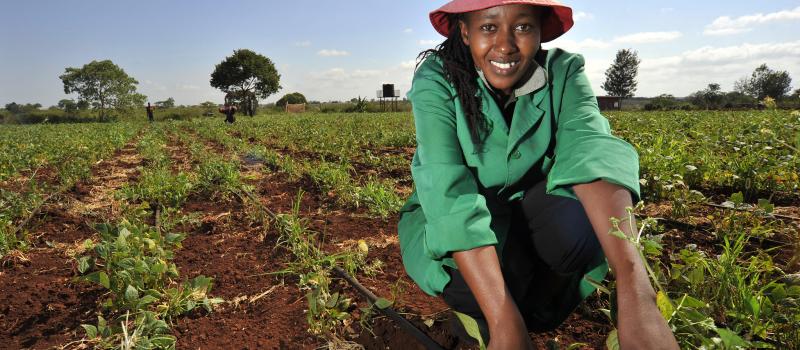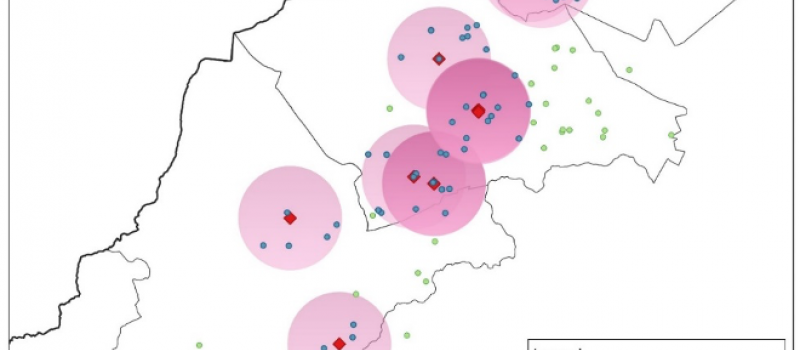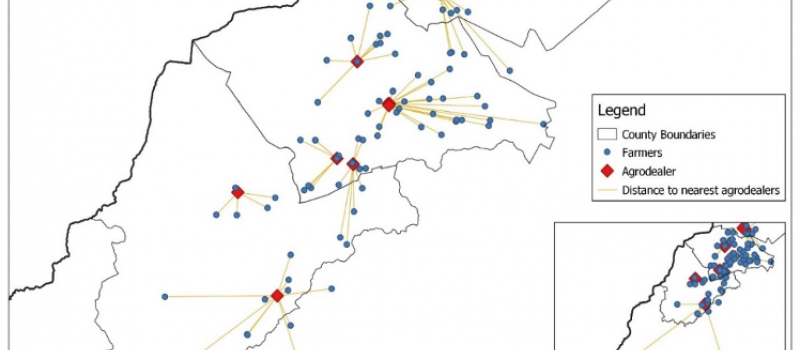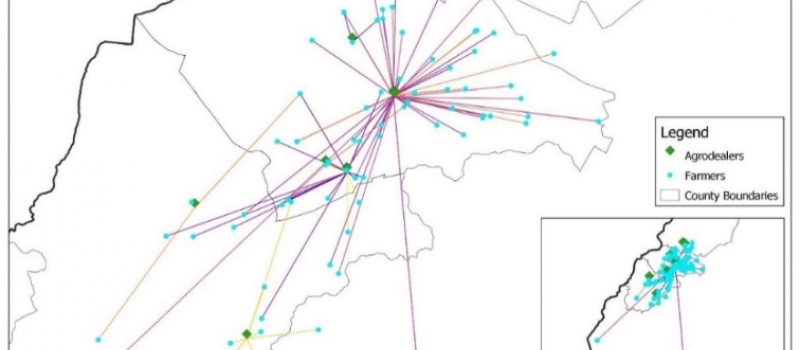This post is written by Bhramar Dey, Justin Machini, Michael Wilcox, and Jean Claude Rubyogo.
After millions of dollars are invested to develop, test, and release a new variety of seeds, hundreds of thousands are then invested in producing it for sale to farmers. When the seed of a new variety reaches the market for the first time, the questions that loom in all minds from breeders and seed companies to national institutions and policymakers are—Where did the variety go? Who bought the seed? And how did the new crop perform?
In agriculture, new varietal dissemination and performance are tied to agricultural seasons. Ideally, one needs those answers in a cost-effective manner within that season, so that feedback and learnings can be quickly accommodated prior to the following planting season. In a fully commercial world, data on seed purchases and sales provide a good estimate of demand and sales through agro dealer networks and can be used to trace where the sales are occurring. However, when dealing with informal seed trade and mostly semi-commercial farmers in most developing countries, the line of sight to the sales data is less clear.
Feed the Future Global Supporting Seed Systems for Development (S34D) activity, funded through Bureau for Resilience and Food Security and the Office of U.S. Foreign Disaster Assistance (OFDA), facilitated the marketing and dissemination High-Iron Bean (HIB) variety—Nyota, a niche product in the counties of Bungoma, Trans-Nzoia, and West Pokot in western Kenya. In September 2019, S34D partners, including the Alliance of Bioversity International and CIAT—Pan Africa Bean Research Alliance (ABC-PABRA) and Catholic Relief Services (CRS) developed and deployed a Point-of-Sale (PoS) digital application to assess varietal dissemination during the planting period and followed up with farmers who grew Nyota after the harvest period in February 2020. The goal of this study was to determine if the PoS application could shed light on new varietal dissemination and farmers’ preferences so that seed companies and agro-dealers could use the information to improve their sales targeting in future seasons.
The Nyota bean variety has multi-attributes; it is climate-smart (maturing in two months), fast cooking, and rich in iron and zinc. This variety was commercially sold in the market for the first time during the short rains season of September/October 2019 by Bubayi Products Ltd (Bubayi), who were licensed to commercialize Nyota by the Kenya Agricultural and Livestock Research Organization (KALRO). The sales were monitored with support from several partners––Bubayi Products Ltd, its agro-dealer network, Kenya Plant Health Inspectorate Services (KEPHIS), Cereal Growers Association (CGA), and several other smallholder farmers.
The PoS application was developed using Dimagi’s CommCare platform and deployed on mobile phones and tablets. The application allowed users to digitally record farmer profiles and sales information (for example price, quantity, seed variety type) for 123 farmers at the fourteen agro dealer shops where they purchased the Nyota seed. Additional contextual information to capture farmers’ risk preferences were also recorded (for example: how much land they owned, cultivated, and/or leased––and what proportion of those land holdings they were willing to plant the new variety on and why). This application also allows follow-ups on the same farmers in subsequent seasons enabling the development of a panel data set for further analysis. All data gathered were gender and age disaggregated.
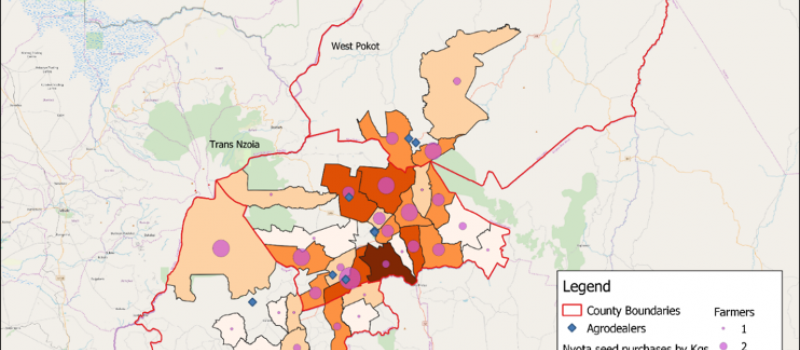
Figure 1: Distribution of farmers who bought Nyota seed in Trans-Nzoia, Bungoma and West Pokot, Kenya
Findings from geospatial analyses
The data in Figure 1 shows in which sub-counties the farmers were located and the amounts of seed that was procured on a spatial basis.
Figure 2 shows the location of agrodealers encircled by a 10 Km buffer radius. The farmers within these 10 Km radii are blue, while farmers outside these radii are green. The darker radius circles show us where there are heavier clusters of agrodealers.
Figure 3 provides an optimal spatial map showing the location of Nyota buyers and their closest agrodealer option.
Figure 4 spatially displays where the Nyota purchases happened – meaning the agro dealer shop where each farmer bought their Nyota seeds and where they took it to
The information in Figures 3 and 4 show farmers prefer certain agro dealer shops and do not necessarily choose the nearest retail outlet. This may be due to issues such as cost, transport routes, trust, or preference to buy several products at one large shop. Ultimately, these factors influence the distances farmers will travel to buy their seeds. Simply setting up agro dealer shops near farmers may not be sufficient reason to attract them to buy inputs from that shop. Further, there is a need for research to help understand farmer preferences for accessing certain agro dealer retail outlets more than others.
This analysis immediately helps to increase market efficiency for future seasonal sales by targeting sales with the agro-dealers where most customers buy their seed. Alternatively, sub-counties, where fewer seed purchases were made, could be targeted for greater awareness creation to increase seed demand. The spatial patterns will also help on-the-ground stakeholders with planning for efficient linkages between input (seed) and output (grain) markets.
Findings from Customer Feedback Survey: Post-Harvest Period, February 2020
Most farmers (72 percent), when asked after the harvest period, confirmed Nyota matured within two months. About 92 percent of farmers remarked Nyota seeds were of high quality. Most farmers consumed the harvest as food (about 90 percent) and about 60 percent saved seeds for next season. A small number reported they would sell a portion of their harvest as grain. About 80 percent of the farmers reported they would again purchase Nyota for its good yield and early maturity.
Climate change and uncertainties in rainfall pose serious threats and risks to smallholders. Thus, farmers try to mitigate such risks by preferring to grow Nyota due to its shorter maturity period. This adaptation builds farmers’ resilience during adverse weather conditions and enables the production of grains even with low and short rains.
One of the key issues farmers raised as they bought the seed was access to better grain markets for the HIB grain. Farmers wanted to know where they would sell grain once they harvested it, which requires sustainable linkages between grain aggregators and off-takers. More market analysis in terms of demand for highly nutritious beans will help to provide a better understanding of the customer profile and this could be linked to spatial analysis of the data to help strengthen market links in subsequent agricultural seasons.
Recommendations Derived from Near-Real-Time Analysis: Next Steps for Upcoming Planting Season
- Farmers found the cost of Nyota to be high relative to alternative sources of seed (saved seed, local open-air markets, and neighbors). Many farmers were willing to test the new variety in their fields. However, the minimum pack size was 2 kg and therefore the price tag was relatively high. To enable farmers to test the new variety in their fields, seed companies need to offer smaller seed packs of 1kg and 500gms.
- More information is required to understand the cost and benefit for seed companies to produce seeds in small packs for this niche product. This is a gap in the current study, and we need more information to assess the threshold costs and benefits for seed companies to be incentivized to produce small packs––even in the first agricultural season.
- Due to its early maturity properties, Nyota is well suited for short rainy seasons compared to long heavy rains. To avoid negative impacts, this information should be included in extension modules and shared with farmers during awareness creation and knowledge dissemination. This has marketing implications for seed companies, extension agents, and agro-dealers’ businesses.
Concluding remarks
Given the lack of market demand information for the seed of new varieties being sold to rural farming communities, this study used a cost-effective spatial approach to understand new varietal dissemination using data gathered at the point of sales in a near real-time manner. Development partners, funders, government, and policymakers are interested in understanding dissemination and uptake of climate-smart, improved seeds to build transformative capacity and resilience––especially at the last mile. Equally important is to learn how new varieties perform in farmers’ fields. The study tracked down farmers after the harvest period to cover one complete agricultural season. Such near real-time spatial analysis helps to incorporate farmers’ feedback with immediate planning for extension and targeting customers at the last mile markets.
Going forward, we recommend development practitioners and partners to use similar type of cost-effective applications in their routine marketing and sales analysis to track dissemination and subsequent adoption patterns of new varieties.
Finally, as captured in the feedback from farmers who grew Nyota in the first season, sustained commercialization (i.e., scaling up of sales for a new variety) depends not only on the ability to supply the new product down to the last mile, but also on the pull mechanisms that exists or can be developed from output markets. Consumers need to know that new high iron beans are now available and what the benefits of these products are in their diets to enhance demand for the seeds. Understanding exact locations of sales for seed in relation to the interested farmers helps facilitate linkages between input (seed) and output (grain) markets.
This blog first appeared on Agrilinks website

